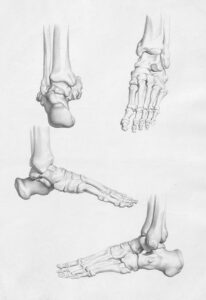The human body is a testament to evolutionary precision, with its structure and functions honed over millions of years to ensure survival and adaptation. For most people, this includes the development of two arms and two legs, arranged symmetrically to facilitate mobility, balance, and dexterity. However, in exceedingly rare cases, this biological blueprint is disrupted, and individuals are born with supernumerary limbs—extra arms or legs that deviate from the typical human form. This rare phenomenon not only fascinates scientists and medical professionals but also raises profound questions about development, identity, and the intersection of biology and environment.
Supernumerary limbs, while rare, have long captured the human imagination. They have been the subject of mythological tales, cultural interpretations, and medical curiosity. These extra limbs can vary widely in form, function, and complexity, with some being fully developed and others incomplete or parasitic. The causes are equally diverse, ranging from genetic mutations to embryological anomalies and even environmental factors. For individuals living with supernumerary limbs, the challenges extend beyond the physical—impacting mental health, social integration, and quality of life.
In this article, we will explore the science behind supernumerary limbs, the medical and psychological challenges associated with them, and the societal perceptions surrounding this condition. By examining the anatomy, genetics, and cultural implications, we aim to provide a comprehensive understanding of a phenomenon that remains as extraordinary as it is complex.
The Formation of Supernumerary Limbs
The Role of Embryonic Development
Supernumerary limbs arise during embryonic development, a period of rapid cell division, differentiation, and organization that ultimately shapes the human body. In typical development, signaling pathways such as the Sonic Hedgehog (SHH) pathway, Fibroblast Growth Factor (FGF) pathway, and Wnt signaling play crucial roles in determining the placement and number of limbs. These pathways work in tandem to ensure that limb buds form at the correct locations on the developing embryo, growing into arms and legs with precise symmetry and functionality.
In rare cases, disruptions in these pathways lead to anomalies in limb development. For example, polymelia, the presence of extra limbs, can occur when there is an error in the axial patterning of the embryo. Axial patterning is responsible for establishing the body’s midline and symmetry, and any disruptions can result in the duplication of structures, including limbs. These anomalies often manifest during the first trimester of pregnancy, a critical period for organogenesis and structural formation.
Types of Supernumerary Limbs
Supernumerary limbs can vary significantly in their presentation, with some being fully functional and others serving no practical purpose. The types include:
- Parasitic Limbs
These are non-functional extra limbs that are usually smaller and less developed than the primary limbs. Parasitic limbs are often attached to the torso or pelvis and may lack independent movement, as they are not fully integrated into the body’s musculoskeletal and nervous systems. - Functional Extra Limbs
In extremely rare cases, supernumerary limbs may be fully developed and functional. These limbs can have their own muscles, nerves, and blood supply, allowing them to move independently. However, the integration of these limbs into everyday activities often requires significant neurological adaptation. - Accessory Limbs in Polymelia
Polymelia often involves extra limbs appearing in unusual locations, such as the chest, back, or abdomen. These limbs are typically incomplete and may share structures, such as bones or joints, with adjacent primary limbs. - Vestigial Limbs
Sometimes, supernumerary limbs present as small, rudimentary appendages without full anatomical structures. These limbs may contain only soft tissue or rudimentary bones and are largely non-functional.
Understanding these variations is critical for medical professionals, as it informs the approach to treatment and surgical intervention.
Causes of Supernumerary Limbs
Genetic Influences
Genetic mutations are a significant factor in the development of supernumerary limbs. Genes involved in limb patterning and growth, such as HOX genes, play a crucial role in determining the number, size, and placement of limbs. Mutations in these genes can disrupt the delicate balance of signaling pathways, leading to the duplication or malformation of limbs.
In some cases, supernumerary limbs are associated with specific genetic syndromes. For example, certain forms of polymelia are linked to chromosomal abnormalities or mutations that affect early embryonic development. Additionally, familial cases of limb duplication have been reported, suggesting a hereditary component in some instances.
Conjoined Twinning and Parasitic Twins
Supernumerary limbs are often associated with conjoined twinning, a phenomenon in which two embryos fail to fully separate during development. In cases of parasitic twinning, one twin becomes partially absorbed into the other, leaving behind extra limbs or other structures. These parasitic limbs are typically non-functional and may lack independent innervation or vascularization.
Parasitic twinning is distinct from complete conjoined twinning, where both twins remain partially joined and retain functional independence. In parasitic twinning, the parasitic twin does not develop fully and relies entirely on the host twin for survival.
Environmental and Teratogenic Factors
Environmental factors can also play a role in the development of supernumerary limbs. Teratogens—substances that interfere with normal embryonic development—can disrupt the signaling pathways responsible for limb formation. These substances include certain medications, chemicals, infections, and even nutritional deficiencies during pregnancy.
For example, exposure to thalidomide, a drug once prescribed for morning sickness, is infamous for causing limb deformities, including the duplication or absence of limbs. While the mechanisms behind these effects are not fully understood, they underscore the importance of environmental influences on embryonic development.
Medical Challenges Associated with Supernumerary Limbs
Physical Implications
The presence of extra limbs can pose significant physical challenges, depending on their size, location, and functionality. Extra limbs attached to the pelvis or torso may interfere with balance, mobility, and posture, making it difficult to perform everyday activities such as walking or sitting. Similarly, extra arms may complicate tasks that require coordination and fine motor skills.
In cases where supernumerary limbs are fused with primary limbs, they may restrict movement or cause discomfort. These fused structures can create abnormal mechanical forces on joints and muscles, leading to pain, inflammation, or long-term damage. Additionally, the presence of extra limbs may increase the risk of infections, especially if they contain poorly vascularized or necrotic tissue.
Psychological and Social Challenges
Beyond the physical challenges, supernumerary limbs can have profound psychological and social effects. The visible nature of the condition often draws unwanted attention, leading to feelings of self-consciousness or social isolation. Children with supernumerary limbs may face bullying or exclusion from peers, while adults may struggle with body image issues or discrimination in the workplace.
The psychological impact of living with supernumerary limbs varies widely, depending on individual resilience, family support, and societal attitudes. Access to counseling and support groups can play a crucial role in helping individuals cope with these challenges.
Medical Complications
In addition to functional and psychological challenges, supernumerary limbs may be associated with other medical complications. For example, individuals with polymelia may have underlying structural abnormalities, such as spinal deformities or organ malformations. These complications can affect overall health and may require additional medical intervention.
Surgical and Therapeutic Interventions
Limb Removal Surgery
Surgical removal of supernumerary limbs is a common treatment option, particularly for non-functional or parasitic limbs. The goal of surgery is to improve mobility, reduce discomfort, and enhance the individual’s quality of life. However, the complexity of the procedure depends on factors such as the size, location, and vascularization of the extra limb.
Surgeons must carefully plan these procedures to minimize damage to surrounding tissues and preserve the functionality of the primary limbs. Advances in microsurgery and imaging techniques have significantly improved outcomes, allowing for more precise and less invasive interventions.
Functional Integration
In cases where the extra limbs are functional, surgical interventions may focus on improving their integration into the individual’s body. This can involve reconstructive procedures to enhance alignment, range of motion, or muscular control. Functional integration is particularly important for individuals who rely on their extra limbs for daily activities.
Physical and Occupational Therapy
Post-surgical rehabilitation is a critical component of treatment for individuals with supernumerary limbs. Physical therapy helps restore strength, flexibility, and coordination, while occupational therapy focuses on adapting to new physical capabilities. These therapies are essential for achieving long-term functional outcomes and improving quality of life.
Supernumerary Limbs in Culture and History
The concept of extra limbs has long been a source of fascination in human culture. In ancient mythology, deities with multiple arms, such as the Hindu god Shiva or the Buddhist goddess Tara, were often depicted as symbols of power, wisdom, and transcendence. These depictions reflect an idealized view of supernumerary limbs, contrasting sharply with the medical realities faced by those living with the condition.
In modern times, individuals with supernumerary limbs have occasionally gained public attention, whether through medical case studies, documentaries, or even circus performances. While such attention can raise awareness, it also risks sensationalizing the condition, reinforcing stereotypes or misconceptions.
Conclusion: Celebrating Diversity and Advancing Science
Supernumerary limbs are a rare and extraordinary phenomenon that challenges our understanding of human anatomy and development. For individuals born with this condition, life involves navigating a complex interplay of physical, psychological, and social challenges. Advances in medical science, combined with greater societal awareness, offer hope for improved outcomes and a better quality of life.
As we continue to explore the mysteries of human biology, the study of supernumerary limbs reminds us of the incredible variability and adaptability of the human body. By fostering understanding and compassion, we can ensure that individuals with rare conditions are not only seen but also celebrated for their uniqueness.




